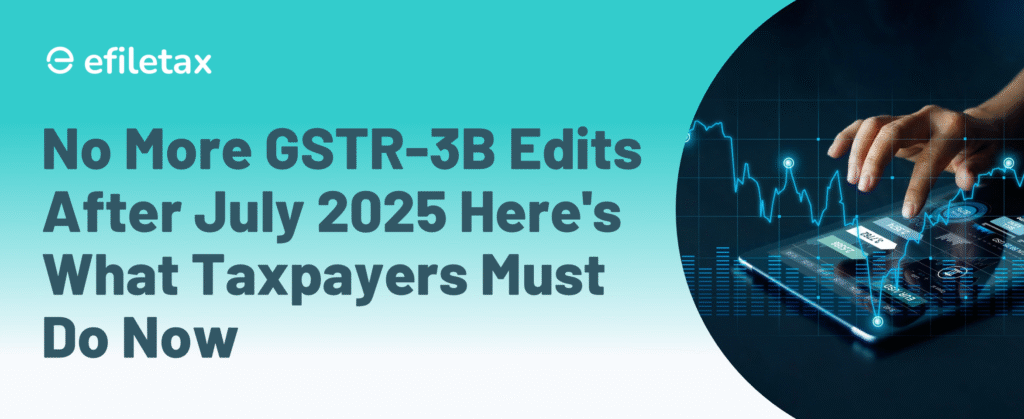
Summary
From July 2025, taxpayers can no longer edit GSTR-3B once filed. CBIC’s system update makes filings final. Learn the step-by-step changes, implications, and expert tips to avoid errors and penalties.
Major Update in GSTR-3B Filing No Edits Allowed After July 2025 – Know the New Process
Starting 1st July 2025, a major change hits GSTR-3B filing:
Once submitted and filed, you can no longer revise or edit the return.
This update was confirmed by CBIC via internal system changes and aligns with legal provisions under Rule 61(5) of CGST Rules, 2017, which treats the filing as final upon submission.
What’s Changing in GSTR-3B Filing?
Until now, taxpayers could file GSTR-3B, then make changes through:
- Subsequent month’s return
- Annual return reconciliation
- Optional rectification windows
From July 2025:
- No post-filing edit options in the GSTN portal
- Auto-locking of GSTR-3B data once filed
- Errors must be corrected in the next return period only
Legal Backing for This Change
This update is supported by:
- Rule 61(5) of CGST Rules: “A return furnished under sub-rule (1) shall be deemed to be filed only after the payment of tax.”
- Section 39(9) of CGST Act: Allows correction in the return of the period in which the error is noticed, not in the same return.
Hence, the new change merely enforces existing law more strictly via portal restrictions.
Step-by-Step: New GSTR-3B Filing Process from July 2025
- Prepare GSTR-3B carefully – no post-filing window
- Double-check tax liability and ITC before final submission
- Preview return thoroughly
- File and pay tax in one go
- If error is discovered:
- Correct in next month’s GSTR-3B
- Use DRC-03 only in specific cases (e.g. voluntary payment)
Why This Change Matters
- Prevents misuse of correction windows
- Enforces discipline and timely reconciliation
- Reduces fraud risk and data inconsistency
Expert View: Double-Check Before You File
“Once the edit option goes, businesses must set up an internal checklist to review GSTR-3B before filing. A second set of eyes is critical,” says CA N. Raghuram, GST specialist.
Pro tip:
- Always reconcile GSTR-2B vs. ITC claimed
- Cross-check with books of accounts
- Use a filing checklist or software validation tool
Mistake in Filed GSTR-3B? Here’s What You Can Do
| Situation | Action |
|---|---|
| Wrong ITC claimed | Reverse in next month + pay interest |
| Underpaid tax | Pay shortfall in next return or via DRC-03 |
| Excess tax paid | Adjust in next return |
| Data mismatch | Reconcile in annual return (GSTR-9) |
Official Source
This procedural change reflects the CBIC’s internal update based on:
📚 Related Read from Efiletax
👉 New GST Amnesty Scheme 2025: Last Chance for Defaulters
FAQs
Q1. Can I revise a filed GSTR-3B from July 2025?
No. Once filed, the return is locked. Use the next period’s return to correct any errors.
Q2. Can I use DRC-03 to fix small mistakes?
Only in specific scenarios like voluntary payments. Not for routine ITC or tax corrections.
Q3. Will this apply to past returns too?
No. This applies prospectively from July 2025.
Final Thoughts
The GSTR-3B filing update from July 2025 brings more accountability but also demands caution. One small mistake can now affect your ITC, tax liability, and invite notices.
✔ Need help with GST return filing or reconciliation?
Efiletax offers expert-managed services to keep your filings error-free and compliant.
Let me know if you want this repurposed as:
- A carousel for Instagram
- A LinkedIn post or thread
- A PDF explainer or WhatsApp creative
Happy to help!